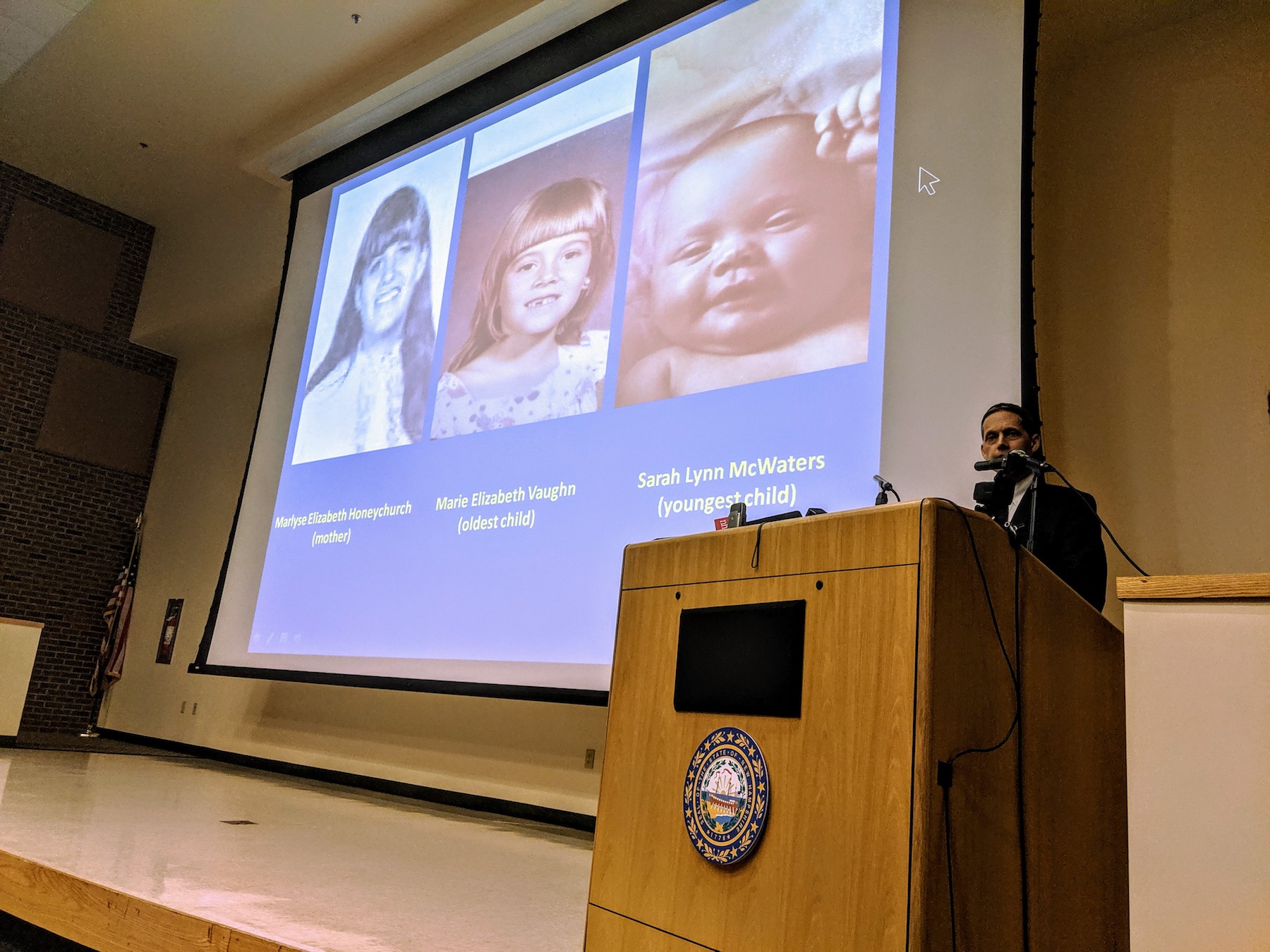
CONCORD, NH – There’s not enough time in this world to heal the mortal wounds perpetrated by serial killer Terry Rasmussen, or the lingering loss for families of his victims. But time has at least allowed for the technology that has helped authorities further unravel the mysteries associated with New Hampshire’s most baffling cold case, known as the Bear Brook murders.
Three of the four previously anonymous victims have been identified.
“I don’t like to use the word closure, because the family obviously will never have closure, but to the level of closure we can bring the family, this restores a level of dignity and respect to those who lost their voices over 33 years ago and gives us a level of appreciation for who they were and how they lived,” said NH State Police Col. Chris Wagner during a press conference held Thursday in Concord.
Related stories
-
- Cold Case: ‘We’re closer to identifying them than ever’ Nov. 8, 2015
- Missing persons, last seen in 1981: Did you know Denise Beaudin or Bob Evans? Dec. 12, 2016
- FBI to search Hayward Street home where woman missing since 1981 lived Jan. 17. 2017
- Cold case: Tent, Port-a-potties in place as FBI swarms Hayward Street residence Jan. 17. ,2017
- FBI packs up after Hayward Street investigation Jan. 20, 2017
- AG: New information links missing woman, Allenstown murder mystery Jan. 25, 2017
- Face of a serial killer: Authorities have their man; now they want to identify his victims Jan 26, 2017
- Denise Beaudin murder case, deconstructed May 13, 2017
- New DNA evidence proves true identity of Robert ‘Bob’ Evans, ‘Allenstown Four’ killer Aug. 18, 2017
- New information, fresh photo released in unsolved Allenstown four murder mystery Nov. 2, 2017
- Search teams hunt Black Acres for clues to 1980 disappearance of Manchester woman Nov. 11, 2017
- Cold Case update: Authorities to revisit Black Acres search for evidence of missing woman May 14, 2018
- Remains of missing Manchester woman last seen in 1984 identified, possible link to string of homicides Nov. 14, 2018
- Authorities announce update on effort to ID ‘Bear Brook 4’ cold case murder victims June 6, 2019
It began in 1985 when two industrial barrels were discovered 15 years apart in the woods. The first barrel held the body of a woman and an older female child. The second barrel, found about 100 yards away in 2000, held the bodies of two younger children. Without identities, investigators had little to work with.
Thanks to DNA technology, widespread interest in genealogy and the Internet, investigators have been able to identify three of the four bodies found in the barrels.
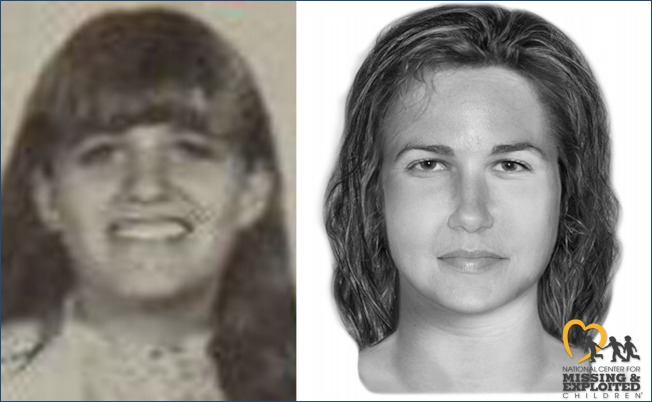
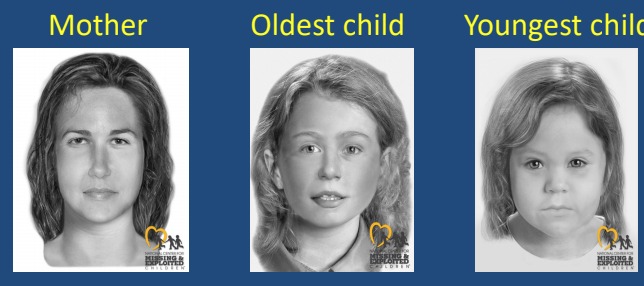
On Thursday, Associate Attorney General Jeffery Strelzin released the name of the woman, Marlyse Elizabeth Honeychurch, previously identified as “the mother.” She is the mother of two of the three child victims. Her two daughters, Marie Elizabeth Vaughn and Sarah Lynn McWaters, previously identified as “the oldest daughter” and “the youngest daughter” based on DNA evidence that linked two of the child victims to the woman, were also identified.
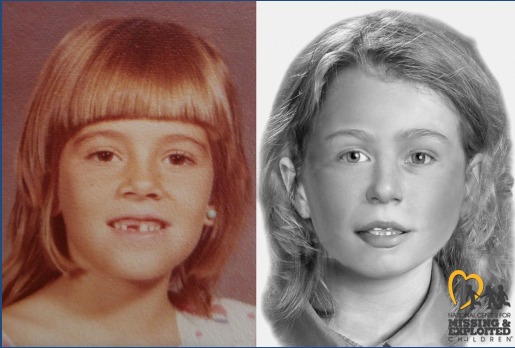
The identity of the third child dumped in the woods remains unknown. All investigators know is that she was the biological child of Terry Rasmussen, the man authorities believe murdered all four and left their bodies stuffed inside the blue barrels.
Family members of Honeychurch were present for the briefing, seated in the front row of the auditorium at the NH Department of Motor Vehicles, along with a victims’ advocate. They have requested privacy and did not speak during the presentation, But a statement was read by Strelzin on their behalf.
“On behalf of our families, we would like to thank everyone who has spent decades tirelessly working to identify our loved ones. This day comes with heavy hearts, Marlyse, Marie and Sarah were so loved by our families and they are greatly missed. We take solace in finally having the answers we have longed for.= Thank you to everyone who never gave up on the ‘Allenstown victims.’ We also want to express our sincere gratitude to the media for helping in the efforts to identify our loved ones. During this difficult time, we are asking for privacy as we process the events that have unfolded over this past week.“

Honeychurch has New England ties. She was born in Connecticut and stayed with her father after her parents divorced. She attended Stamford High School in Stamford, CT, until the age of 15, when she moved to California to be with her mother.
Strelzin walked members of the press through a presentation detailing how the identities of Honeychurch and her daughters were uncovered, and some of the puzzle, solved.
You can read through the presentation, below, which provides a full timeline of the most recent developments of the investigation:
Strelzin said information gathered and provided by the public, most significantly from a professional researcher, Rebecca Heath, whose hobby was looking for missing persons, helped break the case. That researcher had posted on an ancestry board in Nov. 2017, asking whether there could be a connection between the unidentified New Hampshire victims and a missing woman – Marlyse Honeychurch McWaters, who was 24 when she disappeared in 1978 from La Puente. CA, with her two daughters, ages 6 and 1 at the time. Her daughters had two different fathers, Strelzin said. One of the men had hired a private investigator in 1985 after Honeychurch vanished with his child.
“Now we know why the private investigator was unsuccessful,” Strelzin said.
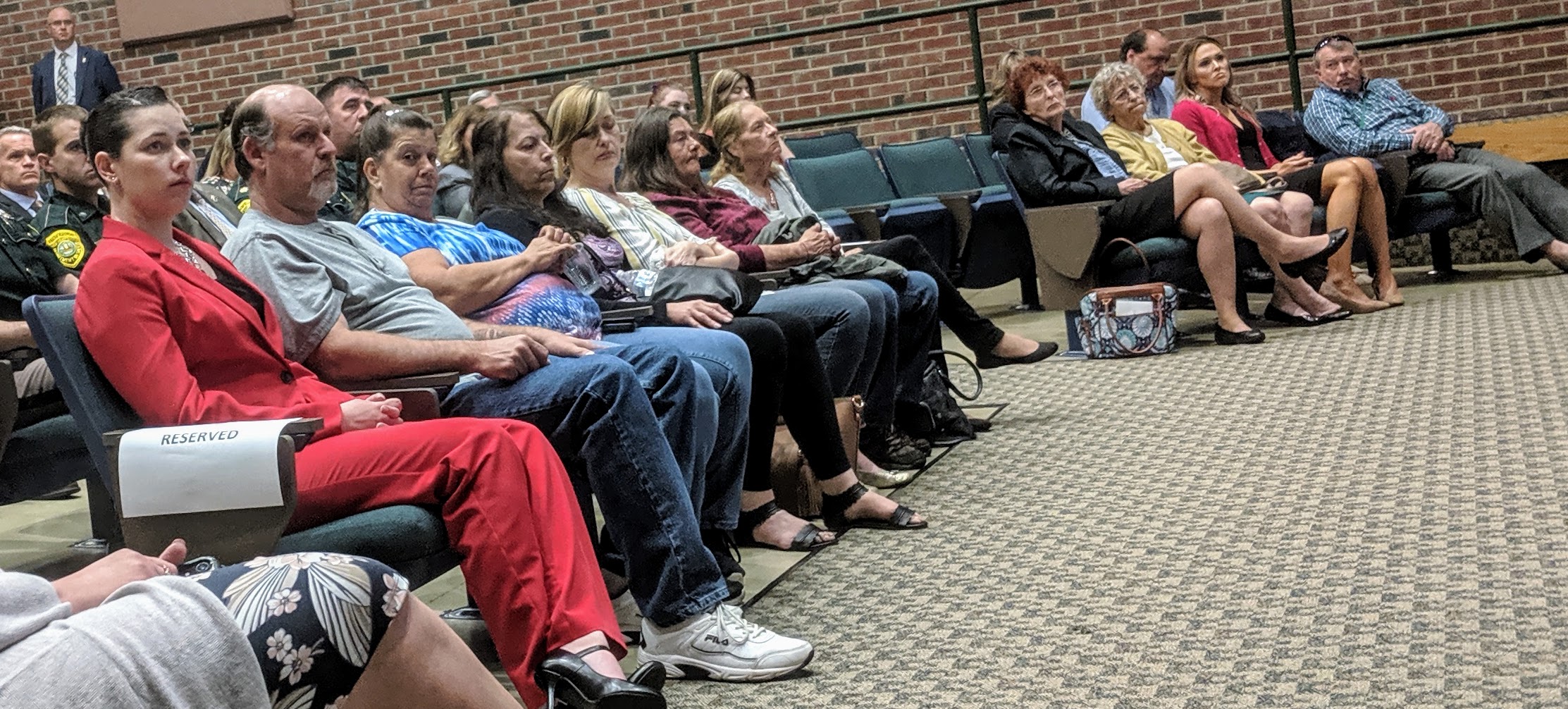
Honeychurch was last seen at her family’s Thanksgiving celebration in 1978, which she attended with Rasmussen. Strelzin said after a minor argument with her family, Marlyse left and was never seen or heard from again.
In Oct. of 2018, that same researcher came upon NH Public Radio’s Bear Brook podcasts, and through listening, remembered a post about someone searching for a Sarah McWaters in 2000. She contacted the person who made that post and asked more questions about Sarah. That person identified Terry Rasmussen as the last person to have contact with Honeychurch, but that person was not aware of Rasmussen’s history, but the researcher was.
Authorities say the focus is now on three unsolved elements of the investigation:
- Whether the “Elizabeth Evans” who lived with Rasmussen in Manchester during a time when he was using the alias “Bob Evans” was, in fact, Marlyse Honeychurch.
- The identity of the mother of the middle child, Rasmussen’s daughter
- Locating Denise Beaudin, who was last known to be living with Rasmussen in Manchester, and last seen in 1981.
In 2017 authorities announced that they had found Beaudin’s daughter, “Lisa,” alive and well. Through Lisa’s quest to learn more about her identity, she provided the DNA key that unlocked part of the mystery that had dogged investigators for years – namely, that Terry Rasmussen was one and the same as Bob Evans, Curtis Kimball, and Gordon Jensen – aliases he had used over the years.
Lisa, who was an infant at the time Beaudin and Rasmussen left New Hampshire, was connected to Beaudin’s family here in New Hampshire through her DNA, and that prompted the FBI in 2017 to dig inside the Hayward Street home Rasmussen and Honeychurch lived in for several years. The excavation was prompted by information learned about Rasmussen – he was convicted in 2003 in California of murdering his wife, Eunsoon Jun, whose body was found buried in a basement. The dig didn’t uncover anything.
Rasmussen died in prison in 2010.
Strelzin said that another development from the DNA research and breaks in the case has been that after the 2017 press conference regarding the disappearance of Denise Beaudin, a tip was received from the public reporting another missing woman, Denise Daneault. Her name has been added to the missing persons database. Strelzin said they have not linked her disappearance to Rasmussen.
Police are seeking information on Denise Beaudin, Denise Daneault, and the identity of the mother of the “middle child” found in Bear Brook park, fathered by Rasmussen.
Contact:
- NH State Police Cold Case Unit at 603-223-3856, or coldcaseunit@dos.nh.gov
- Manchester Poilce Department, 603-668-8711 LHobbs@manchesternh.gov
- National Center for Missing and Exploited Children 1-800-THE-LOST ncmectips@ncmec.org







